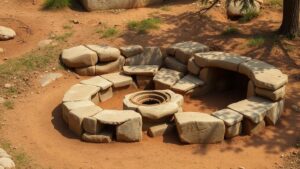Reading “Map Within a Map” Clues Used to Confuse Treasure Seekers
Reading Map Within a Map Clues Used to Confuse Treasure Seekers
The pursuit of treasure has captured human imagination for centuries, spurring countless adventures and capturing the minds of both amateur and professional seekers. Among the numerous tools available, maps serve as one of the most crucial resources. But, some maps intentionally incorporate misleading clues, often referred to as map within a map strategies, to confuse those on a treasure hunt. This article delves into the intricacies of these deceptive techniques, providing clarity and insight for those looking to navigate their way successfully through rich histories filled with treachery.
The Concept of Map Within a Map
The term map within a map refers to a phenomenon where a primary map contains elements that mislead the viewer, such as secondary maps represented in illustrations or symbols that lead to false trails. Often, these deceptive clues are carefully embedded in the imagery or text, complicating the interpretation for treasure seekers. An example of this can be found in historical treasure maps, which may include exaggerated features or symbolic representations that disguise the true location of the treasure.
Throughout history, cryptic treasure maps have spawned legends and excitement. One notable example is the infamous Oak Island Money Pit, where treasure hunters have engaged in ceaseless excavation based on a series of misleading maps and clues. The original map, drawn in the late 1700s, includes markers that many believe to signify valuable treasures. But, it has resulted in numerous dead ends due to potentially fabricated clues intended to divert seekers from the true treasure location.
Another example is the Dighton Rock, a large boulder in Massachusetts inscribed with various petroglyphs. Despite numerous interpretations suggesting that the inscriptions indicate hidden treasures, many of these clues lack substantiation, leaving treasure hunters struggling to decipher meaning amidst confusion.
Types of Misleading Clues
Understanding the various types of misleading clues is crucial for successful treasure hunting. Here are some common examples:
- Symbolic Representation: Symbols can stand for multiple items, leading to varied interpretations. For example, an X may signify a treasure spot but could also indicate a danger zone.
- Reverse Geography: Some maps employ reversed features, like upside-down landmarks, making it difficult to align with real-world locations. This can confuse seekers and send them off course.
- Intentional Errors: Erroneous information, intentionally placed as a red herring, can mislead seekers. For example, incorrect distances between landmarks can create a false narrative about where to dig or search.
Psychological Factors in Treasure Hunting
The psychology behind treasure hunting often leads seekers to interpret clues with a sense of optimism and eagerness. Such emotions can cloud judgment and lead to an overreliance on potentially misleading clues. Psychological studies suggest that cognitive biases, such as confirmation bias, play a significant role; seekers tend to find evidence that confirms their existing beliefs while disregarding contradictory clues.
This psychological factor became evident in the case of the Lost Dutchmans Gold Mine. Enthusiasts go to great lengths to interpret scattered leads, often ignoring more practical readings of the clues that may denote safer or real paths.
Real-World Applications for Navigating Treasure Maps
For modern treasure seekers, avoiding confusion caused by misleading clues requires a multifaceted approach:
- Cross-Verification: Seekers should validate clues using geographical tools and independent research. Maps from different time periods or surveys can help identify discrepancies.
- Utilizing Technology: Modern technology such as GPS and GIS (Geographic Information Systems) can significantly enhance the ability to interpret maps accurately, navigating beyond traditional intuition.
- Collaborative Analysis: Group discussions are invaluable for unpacking complex clues. Diverse perspectives often illuminate overlooked details and hidden meanings.
Conclusion: The Quest for Treasure
The pursuit of treasure encapsulated in map within a map clues serves as a fascinating intersection of history, psychology, and exploration. By understanding the intricacies of misleading clues and employing strategic approaches, treasure seekers can enhance their chances of success while also enjoying the rich narrative woven through the art of map reading.
In summary, while treasure maps may carry an aura of mystery and adventure, the key to unlocking their secrets lies in diligent investigation, scrutiny of potential red herrings, and a trustworthy support network–after all, even the brightest map can lead one astray without the right navigational tools.

